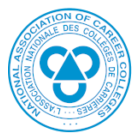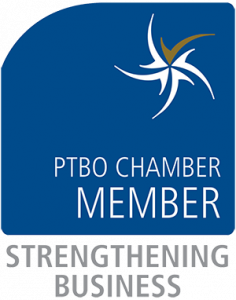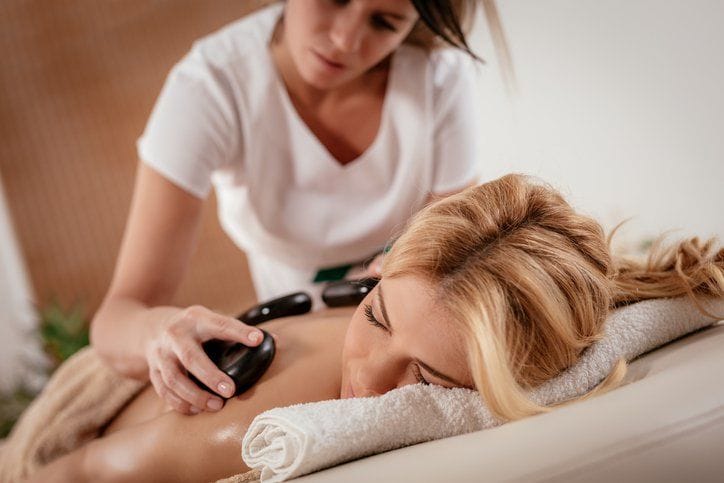
Hydrotherapy is the use of water for therapeutic purposes. From Rome to Japan, societies all over the world have been using water for health and relaxation for thousands of years. Today, massage therapists continue this ancient tradition by incorporating hydrotherapy into their practices.
Hydrotherapy covers a broad spectrum of therapeutic techniques and you’ll learn about some of them during your massage therapy training. To give you an idea of how you can incorporate water into your career as a massage therapist, here are three types of hydrotherapy techniques massage therapists use.
Massage Therapists Can Use Hot and Cold Compresses as a Form of Contrast Hydrotherapy
Hydrotherapy often relies on the contrast between hot and cold, which is called contrast hydrotherapy. The theory behind this technique is that hot water causes blood vessels that are close to the surface of the skin to dilate, while cold water causes them to contract. This alternating between hot and cold water is thought to stimulate circulation, remove waste from body tissue, and decrease inflammation.
Contrast hydrotherapy can take many different forms. In fact, simply alternating between hot and cold water while taking a shower is a form of contrast hydrotherapy! As a massage therapist, compresses are an especially common contrast hydrotherapy technique you can use in your practice. Compresses are often towels that are soaked in hot or cold water. If a client is suffering from inflammation or soreness, you can apply alternating hot and cold compresses to the affected area. Contrast hydrotherapy is a simple and cost-effective form of hydrotherapy that requires little investment or advanced equipment, so massage therapists can use it even if they are working in a client’s home.
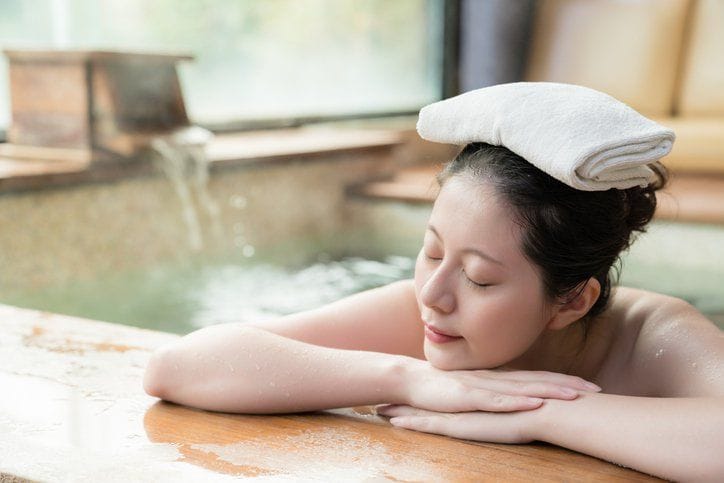 Applying hot and cold compresses is used to relieve soreness and inflammation
Applying hot and cold compresses is used to relieve soreness and inflammation
One of the Most Popular Types of Hydrotherapy Is Hot Stone Massage
Hot stone massages are a staple treatment at spas, and while at first glance hot stone massage may not look like hydrotherapy, it actually is. That’s because the stones are heated in hot water. Once heated, they are then applied to strategic areas of the body, such as the spine, stomach, hands, feet, chest, and face.
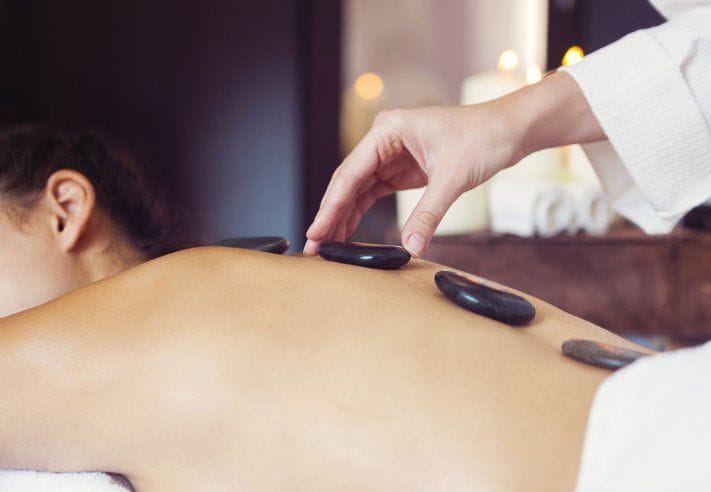 During hot stone massage the stones are heated in water and then applied to the body
During hot stone massage the stones are heated in water and then applied to the body
While in some cases the stones are simply left in place, you can also use them to administer the massage techniques that you’ll acquire during your massage therapy courses. For instance, massage therapists sometimes use the stones to manipulate the client’s soft tissue. Stone massage therapy can also incorporate contrast hydrotherapy by applying stones that have been cooled in cold water after the hot stones have already been applied.
Skills Learned in Massage Therapy Courses Can Be Applied to Underwater Massage
Another way that massage therapists can use water in their practice is through water pressure. When water pressure is utilized in massage, it is referred to as a hydro massage. The pressure from the water can activate the muscles and relieve pain and soreness, much like a typical soft tissue massage.
One type of hydro massage that is popular today is underwater massage. With this type of massage, the client is submerged in water, such as in a pool or a tub. As a massage therapist, you then use the soft tissue manipulation techniques learned in your massage therapy program, but you apply them using a specialized water hose rather than with your hands. You can adjust the amount of pressure coming out of the hose so that your client feels more comfortable, as well as to achieve the desired therapeutic benefits.
Do you want to train for a fulfilling new career?
Contact Oxford College to learn more about our massage therapy diploma program.



